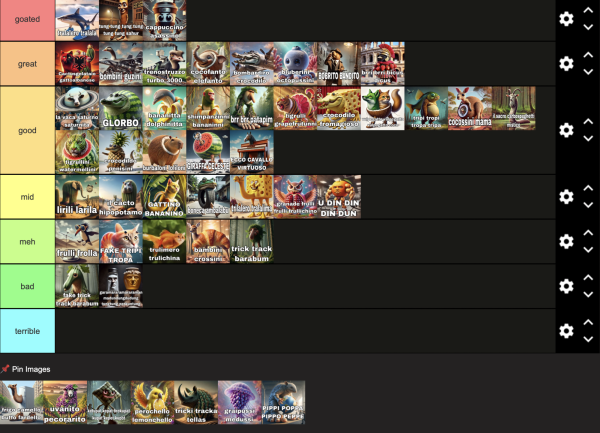Connect days: Good or bad?
Over the past year and a half, Christ Church has done everything in its power to promote in-person learning during the pandemic. They have tried to implement a daily schedule that limits the spread of the virus while conforming with the needs of their students. Students and teachers alike have had to make a number of adjustments to fit in with this new schedule. While the schedule has aided the school in keeping its students on campus, aspects of it could still be modified to maximize the quality of learning on campus.
Last school year, the daily schedule consisted of alternating “Blue” and “Gold” days. On Blue days, students would have periods 1, 3, 5, and 7, whereas Gold days had periods 2, 4, and 8, with Cavblock. Each period, including Cav Block lasted for 85 minutes, a big change from the 45-minute classes of the pre-Covid era. At the beginning of the year, many students had trouble staying focused for the entire period and complained about the new schedule. However, as the year progressed, more and more students began to realize that with the new schedule, they had more time to dive deeper into lessons and an extra night to do their homework for each class.
By the end of the year, while some still missed the quicker-paced schedule of the pre-Covid era, many Cavaliers had come to enjoy the block schedule with the longer classes. At the end of the year, the school asked students what they thought about the block schedule during the 2020-2021 school year. The general consensus was that while most students wanted to keep longer classes, they wanted to limit the time spent each week on Cavblock.
This year, taking these suggestions into consideration, the CCES administration adopted a slightly modified schedule from last year. The schedule still consists of Blue and Gold days, however, there are a few twists. On Mondays, students have the luxury of a late start, with 2nd period starting at 9:00 AM. For the rest of this Gold day, students have 4th and 8th period, with assembly and Cavblock. Tuesday is a normal Blue day, with periods 1, 3, 5, and 7. On Thursday, with the exception of chapel and a normal start time of 8:30 AM, the schedule is the same as Monday but the classes are in reverse, starting with 8th period and ending with 2nd. The same is true for Fridays, which are reverse Blue days. Many students enjoy these Blue and Gold days, however, the schedule on Wednesdays has received much more pushback.
Wednesdays, also known as Connect days, have been a new addition to the Cavalier schedule this year. On these days, all seven class periods meet for 45 minutes, with limited breaks and no Cavblock, nor assembly, nor chapel time. While in theory, these days might seem like a good checkpoint, or chance to “connect”, with each class in the middle of the week, in reality they have led to more wasted class time and unneeded stress.
Throughout the year, the 45 minute class periods of Connect days have promoted inefficiency in the classroom and overall wasted time. With so many transitions between classes, it often takes a long time for classes to settle in and get started, which means that the already short classes are being shortened even more. Another major problem with Connect days is that there is not enough time for teachers to administer major assessments. This essentially eliminates Wednesdays as a testing day, leading to tests for different classes crowding on the same days, unnecessarily increasing stress levels for students.
There is a general consensus among teachers and students alike that Connect days do not positively contribute to the learning environment at Christ Church. When asked if they thought the school should keep Connect days in their schedule next year, both sophomore Charlie Creech and senior Braden Epley said no. “You get nothing done,” said Charlie. “They’re basically a waste of time.” With the short classes, students feel like they are not diving deep enough into lessons to get anything out of them.
Furthermore, some Cavaliers believe that having every class on a single day seems to slow down the pace of the school day. “Connect days feel excessively long,” said Braden. With all of the rotations between classes and so much variety in subject material, Connect days have the tendency to feel longer than they really are.
In conclusion, while the idea of having a checkpoint during the week where students can interact with all of their teachers is a good one, Connect days do not achieve it. Ultimately they waste time, increase student stress, and cause the school day to drag along at a seemingly slower pace than normal. In the coming years, the school needs to find a substitute for Connect Days to ensure the most efficient and liked schedule for the betterment of their students.






